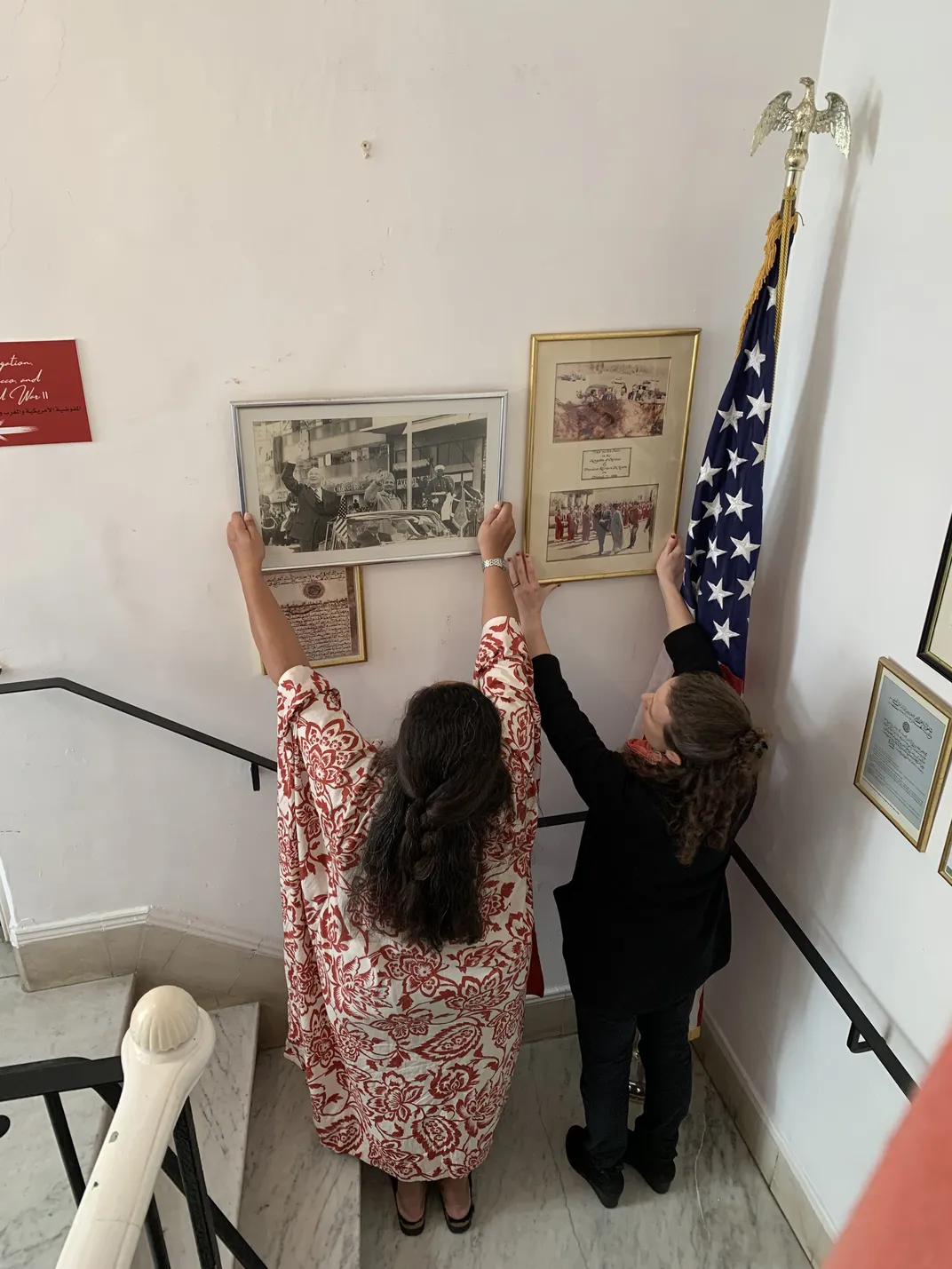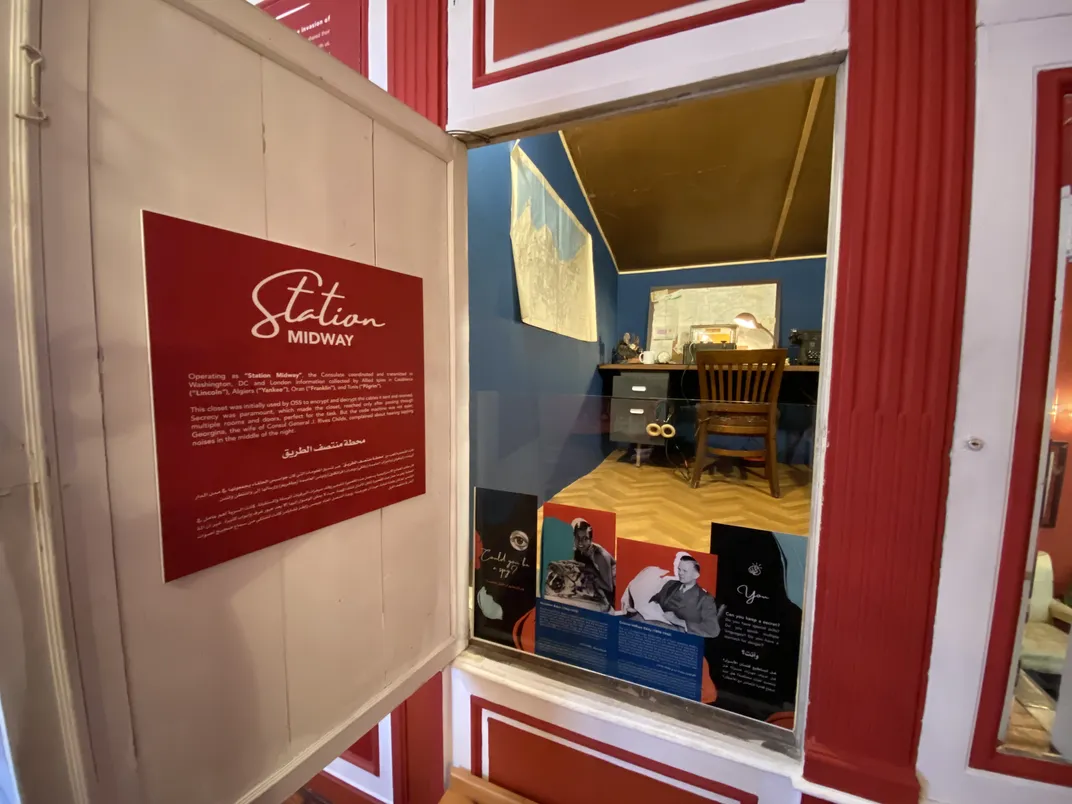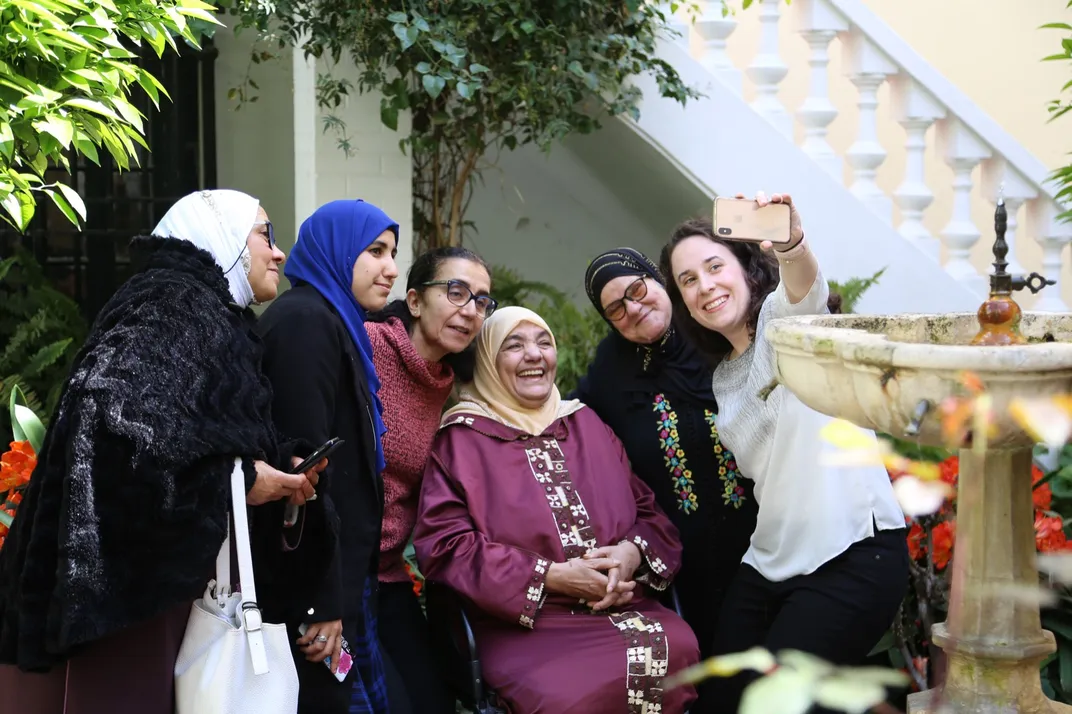Looking Back to Look Forward in Morocco
How the Smithsonian collaborated with the Tangier American Legation to help a historic building look to the future
:focal(1024x770:1025x771)/https://tf-cmsv2-smithsonianmag-media.s3.amazonaws.com/filer_public/76/b6/76b6df06-2a5d-4089-9d3f-854fd5fe44b6/img_1764.jpeg)
On May 1, 2024, the National Trust for Historic Preservation announced that it was including the Tangier American Legation on the 2024 list of America’s 11 Most Endangered Historic Places. The Trust’s list is an annual designation that raises national awareness about threatened historic sites across the country. How, then, did it come to select a site in Morocco? The answer is tied to learning more about the relationship U.S. institutions have abroad.
The Smithsonian is one such institution that has relationships beyond our national borders; people are frequently unaware of the Smithsonian’s active program of working around the globe. The Smithsonian has been international since its founding in 1846; just a few years later, in 1867, the International Exchange Service, a predecessor to my office (the Office of Global Affairs), was established to share scientific discoveries and publications with the world. I love thinking about these roots in global knowledge sharing. Today, the Smithsonian is active in more than 100 countries each year, conducting research, building capacity, and generally learning with and from others who are carrying out missions that align with our own of the “increase and diffusion of knowledge.”
Leveraging the strengths of the Smithsonian and in close collaboration with our myriad museums and research and education centers, the Office of Global Affairs collaborates with international colleagues, institutions, and communities to strengthen the capacity of museums to manage and protect cultural heritage. Through this work, museums and cultural centers can be more effective and inclusive stewards of cultural and natural heritage and serve as sites of meaningful education and community engagement. Our Global Museums Forward Program mobilizes multi-disciplinary teams across the Institution to support our global colleagues through workshops and facilitated dialogue, co-developed practical applications of shared learning, programmed site visits (in DC and abroad), on-the-ground strategic assessments paired with future planning, and more. In 2021, as part of our Global Museums Forward work, the Office of Global Affairs began leading a collaboration with the Tangier American Legation (“the Legation”), located in Morocco’s northern coastal city of Tangier.
At first glance, the Smithsonian and the Legation may seem like unusual bedfellows. The Smithsonian is the world’s largest museum, education, and research complex, comprised of 21 museums, several libraries and archives, eight research centers, and the National Zoo. The Legation, run by a non-profit NGO called the Tangier American Legation Institute for Moroccan Studies, is a small but mighty gem nestled in the Medina in Tangier. Yet it is also a museum, a research center with a renowned library and archive, and a formidable public programming engine that serves as a critical community resource. Both organizations are committed to serving audiences and scholars. And both also tell America’s story, albeit in different ways: the Legation helps visitors understand that Morocco extended support to our nation when it was a fledgling democracy – indeed, Morocco was our nation’s first “friend,” and the Legation itself was a gift to the United States from Sultan Moulay Suleiman. The history is fascinating.

We in the Office of Global Affairs had been hearing about the Legation for years. It is clearly a beloved place for so many, including multiple U.S. Ambassadors who long tried to galvanize support for a collaboration. (The Legation buildings are owned by the U.S. Department of State, which is currently working with the non-profit Fund to Conserve U.S. Diplomatic Treasures Abroad to raise money for their rehabilitation and ongoing maintenance.) Stars finally aligned to strike up a collaboration, supported by the U.S. Embassy in Rabat, in honor of the Legation’s bicentennial celebration in 2021, and for more than two years, the Office of Global Affairs worked closely with the Legation team to enhance their exhibitions and storytelling for more effective public engagement, support the staff as it cares for its collection, and consider ways to augment its digital outreach.
We began the partnership with a joint effort to “chart the next 200 years” with an Interpretive Master Plan, a roadmap of sorts for helping the Legation formalize its thinking about key messages and goals, audiences, and leveraging strengths. This plan, completed in November 2022 with support from the Smithsonian Exhibits team, focused on the Legation’s identity as a museum, helping to establish interpretive strategies and a coordinated approach to exhibition content and related programming. Our collaborative work helped establish key themes for exhibition spaces and written content, as well as design a new entry experience, allowing visitors to better understand the history of the building and the stories it contains through photos, paintings, and other donated materials. Over several months, the Smithsonian team, which included experts from the Office of Global Affairs, Smithsonian Exhibits, the National Museum of Asian Art, and the National Museum of Natural History, supported the development of new interpretive materials, including a new museum guide and label templates (and many new object labels!) – all with a fresh and consistent look and feel.

One particularly exciting transformation was helping the museum turn a storage area into exhibition space for The Legation, Morocco and World War II, which opened in November 2022 and tells the story of Operation Torch, the liberation of North Africa from the Nazi-allied French. More than 33,000 American soldiers came ashore and gained control of the territory in just 74 hours. The museum worked with a dedicated scholar who researched and wrote the exhibition, and our team reviewed draft texts. Not all visitors realize that during WWII, Tangier was an international zone oozing with spies – for the French, British, Nazis, and the Spanish. The U.S. was there too, and the Office of Strategic Services, America’s first intelligence agency, operated out of a small closet in the Legation, transmitting critical information for the successful planning of Operation Torch. The “spy closet” is now the museum highlight for many visitors.

And of course, the collections tell their own stories, of people who lived or spent significant time in the Legation, children of diplomats, Peace Corps volunteers, and others. Several American expatriates who came to love Tangier donated items – prints, paintings, correspondence. Another way our program supported the Legation was helping provide recommendations and active support for improving collections management and storage. Advising on mitigating some imminent risks to collections based on lighting or other display challenges helped the Legation team make some immediate changes and ensure the collection will endure for future generations to enjoy. The Legation’s Executive Director, Jen Rasamimanana shared, “The Legation was built by a group of dedicated volunteers and staff who created a wonderful multifaceted organization out of a rundown but storied building. But we weren’t museum professionals. There was much we didn’t know. The Smithsonian’s expertise helped us prioritize, plan, rethink, and take the museum to the next level.”
So many museums strive to connect audiences to the past and present; the Legation embodies that goal. When I first visited in 2022, I had the opportunity to meet an incredible and inspiring group of women, all from the Medina, who shared stories about how the Legation changed their lives. Several of these women were small business owners—one of them was an artist with a show at the Legation—but none of them could read until they went through the Legation’s literacy program. They shared their stories with such pride and such appreciation – it was really moving.

In another example of the Legation’s impact in its community, I met a professor from a Moroccan university who visited the Legation as a child, “discovered” and researched his dissertation topic among the primary sources in the research library, and now takes his own students there – an amazing full circle kind of story.
I hope readers of this story will follow the Legation on Facebook and Instagram (@tangieramericanlegation) and if you ever have the opportunity, I hope you will visit. You will not be disappointed, and you will get to meet the superb Legation team that we at the Smithsonian are so lucky to call friends.
